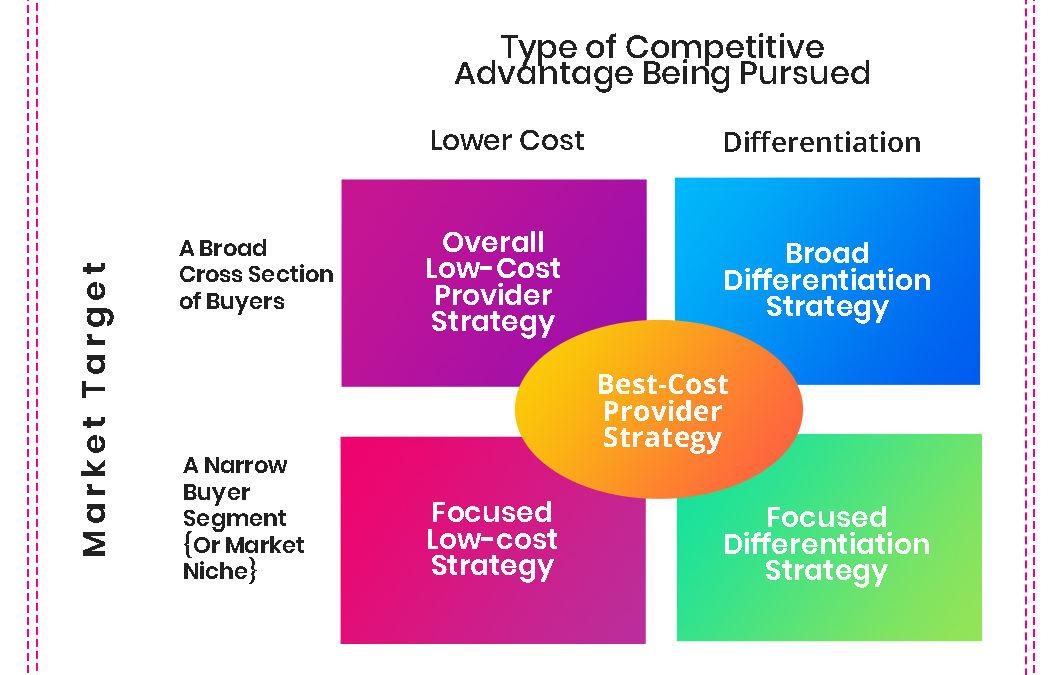In the rapidly evolving landscape of technology startups, securing capital is not merely a hurdle; it is a critical stepping stone to success. With an influx of innovative ideas vying for investor attention, entrepreneurs must adopt strategic approaches to differentiate themselves and appeal to potential backers. This article explores the multifaceted strategies that can empower tech startups to secure the necessary funding to transform their visions into reality. From understanding the nuances of venture capital and angel investing to leveraging crowdfunding platforms and building robust business networks, we will delve into actionable insights and proven methodologies that can enhance your fundraising efforts. By effectively navigating the competitive funding environment, founders can position their startups for sustainable growth and long-term viability in a technology-driven market.
Table of Contents
- Identifying Diverse Funding Sources for Technology Ventures
- Crafting a Compelling Business Plan to Attract Investors
- Leveraging Networking Opportunities to Enhance Capital Acquisition
- Implementing Effective Financial Management Strategies for Growth
- Key Takeaways
Identifying Diverse Funding Sources for Technology Ventures
For technology ventures looking to secure capital, identifying a wide array of funding sources can greatly enhance the chances of success. Angel investors often provide not only capital but also valuable mentorship for early-stage startups. Venture capitalists are another important source; they typically invest in companies with high growth potential in exchange for equity. It is also beneficial to explore government grants and innovation funds aimed at boosting technological advancements within specific industries. Furthermore, crowdfunding platforms enable startups to gather smaller investments from a larger number of people, validating the business idea and generating a customer base before launch.
In addition to these traditional funding avenues, tech entrepreneurs should not overlook alternative sources such as strategic partnerships and corporate venture arms, which can provide both funding and strategic support. Bootstrapping, or self-funding, can also be a viable option for founders aiming to maintain control over their business without external influence. Lastly, consider joining startup incubators and accelerators that offer not just funding, but also mentorship, networking opportunities, and crucial resources to help your tech venture thrive.
| Funding Source | Description |
|---|---|
| Angel Investors | Wealthy individuals offering capital and advice. |
| Venture Capitalists | Investors focusing on high-growth startups in exchange for equity. |
| Government Grants | Non-repayable funds aimed at fostering innovation. |
| Crowdfunding | Collecting small contributions from many people via online platforms. |
| Corporate Partnerships | Collaboration opportunities with established companies for mutual benefit. |
Crafting a Compelling Business Plan to Attract Investors
When crafting a business plan that captures the attention of investors, clarity and precision are essential. Begin by clearly articulating your value proposition—what makes your tech startup unique in a crowded market. Your plan should include a detailed analysis of your target market, showcasing an understanding of customer needs and competitive landscape. Emphasize your revenue model, outlining how you intend to generate income and maintain profitability. Investors are particularly keen on well-documented financial projections, so include a 3- to 5-year forecast, demonstrating not only the potential returns but also the metrics you will use to measure performance.
In addition to these elements, a compelling business plan should present a strong management team. Highlight the relevant experience and skills of your team members, which contribute to your startup’s success. Include a summary of your marketing strategy, detailing how you plan to promote your product and reach your audience effectively. A well-structured roadmap with clear milestones will further enhance your plan, giving potential investors a timeline of your startup’s growth. To illustrate, consider using the following table layout to summarize your strategic milestones:
| Milestone | Objective | Target Date |
|---|---|---|
| Product Development | Launch MVP | Q2 2024 |
| Market Entry | Initiate marketing campaign | Q3 2024 |
| Funding Round | Secure Series A investment | Q4 2024 |
| User Growth | Reach 10,000 active users | Q1 2025 |
Leveraging Networking Opportunities to Enhance Capital Acquisition
In today’s competitive tech landscape, networking has become a pivotal asset in the quest for capital. Building genuine relationships with potential investors and industry peers not only enhances visibility but also provides invaluable insights into market trends, investor expectations, and successful funding strategies. Attend industry conferences, participate in startup showcases, and engage in local entrepreneurship events to maximize your exposure. Consider leveraging platforms like LinkedIn and AngelList to connect with pertinent stakeholders, as a strong online presence can complement your face-to-face interactions and bolster your credibility.
To further augment your networking efforts, consider joining or forming groups focused on tech innovation and investment. These communities often host discussions, workshops, and seminars that can facilitate introductions to key figures in the investment sector. When crafting your approach, ensure to highlight your unique value proposition clearly. Here’s a useful table to outline crucial elements for effective networking:
| Networking Element | Description |
|---|---|
| Personal Branding | Showcase your expertise and passion through consistent messaging. |
| Follow-Up | Maintain connections with timely follow-ups to reinforce relationships. |
| Value Sharing | Offer insights and assistance to your network, fostering reciprocity. |
| Social Proof | Gather testimonials and endorsements to build trust. |
Implementing Effective Financial Management Strategies for Growth
To ensure sustainable growth for your tech startup, implementing robust financial management strategies is crucial. Begin by establishing a comprehensive budget that outlines both operational costs and projected revenues. This framework will help in identifying areas where you can optimize spending and reinvest savings into growth initiatives. Additionally, consider adopting a rolling forecast approach that allows for agility in financial planning as your startup evolves. Key strategies include:
- Cash Flow Management: Maintain a close watch on cash inflows and outflows to prevent shortfalls that could hinder operations.
- Fund Allocation: Prioritize investment in high-impact areas such as technology development, marketing, and talent acquisition to enhance productivity and market reach.
- Financial KPIs: Regularly monitor key performance indicators (KPIs) such as customer acquisition cost (CAC) and customer lifetime value (CLV) to evaluate and adjust your financial strategies.
Moreover, diversifying your capital sources can bolster your financial stability. Explore a mix of funding avenues such as venture capital, angel investors, and crowdfunding platforms. Each option brings its own set of advantages, contributing to different aspects of your growth strategy. Below is a simplified overview of various funding sources and their characteristics:
| Funding Source | Advantages | Considerations |
|---|---|---|
| Venture Capital | Large amounts of capital, industry expertise, networking opportunities | Loss of equity, potential pressure for quick returns |
| Angel Investors | Flexible terms, mentorship, personalized support | Variable investment amounts, potential loss of control |
| Crowdfunding | Market validation, access to a broad audience, maintains equity | Time-consuming, success is not guaranteed |
Key Takeaways
securing capital for your tech startup requires a multifaceted approach that combines thorough market research, a compelling business plan, and a strategic understanding of potential funding sources. By leveraging diverse funding mechanisms—from angel investors and venture capitalists to crowdfunding and strategic partnerships—you can position your startup for sustainable growth and innovation.
Equally important is the need to cultivate relationships within your industry and to present your vision with clarity and confidence. The right connections not only provide access to funding but also open doors to invaluable mentorship and resources that can propel your startup forward.
As you embark on this critical journey, remember that the capital seeking process is not merely transactional; it is a chance to articulate your passion and commitment to your vision. With diligence and strategic foresight, you can attract the right investors who not only believe in your idea but are also invested in your long-term success.
Ultimately, the ability to secure capital is not just about funding; it’s about forging partnerships that foster growth and innovation. Equip yourself with the insights and strategies we’ve outlined, and take confident strides toward realizing your startup’s potential. Your journey to capturing the necessary capital starts now—embrace it with determination and foresight.






